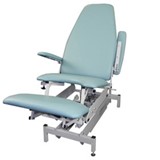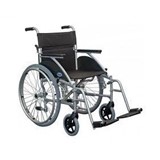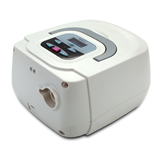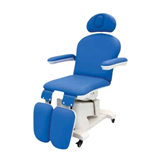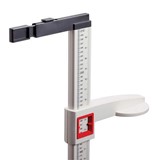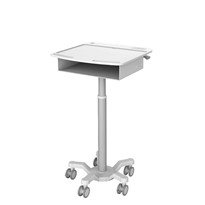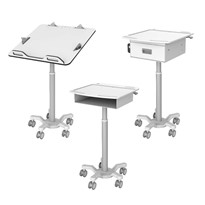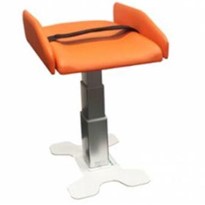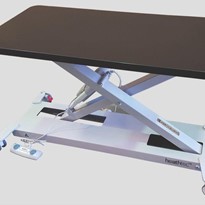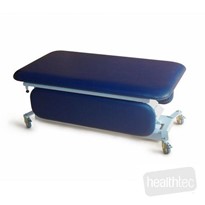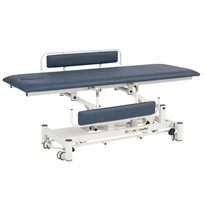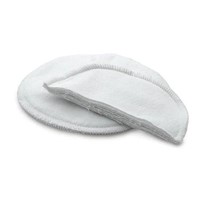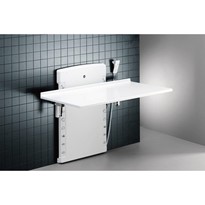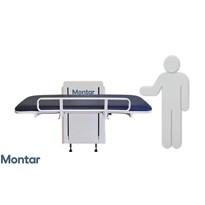To ensure patient safety and meet their needs, hourly nursing rounds are performed routinely to provide best levels of care. This can involve nurses walking from ward to ward and bedside to bedside, reviewing the deterioration of critical patients, decision making or applying clinical assistance and the documentation of care. This continuous level of physical support is conducted by nurses of varying heights and age. Throughout a shift, attending to patients can range widely from quick check-ups and constant movement to extended periods of time standing by monitoring and working.
It is common to see nurses conducting their important and life preserving rounds pushing a traditional stainless steel dressing trolley or the like, which is an accepted method of using a compact clinal trolley to move documents, IT equipment and supporting medical devices. Aside from sometimes being noisy when wheeled, these trolleys usually have small wheels making them harder to push and are mostly fixed in one work surface height.
When pushing a trolley or standing and working from one over substantial periods of time, there are potential risk factors to consider in the health and well-being of the caregiver;
Posture
After an employee works for a while in the same position, they may not realise when they’re beginning to slouch, causing stress to the lumber and backbone, developing various aches and pains throughout their body such as backache, headache and neck pain. Using adjustable height trolleys allows them to regularly change posture and provide adequate support to the back by tightening the abdominal muscles.
Fatigue
Working in the same position too long can facilitate the early stages of sleepiness or fatigue. By changing positions frequently with the help of adjustable height work surfaces, an employee can boost cardiovascular activity allowing nutrients and oxygen to run more freely in the tissues. This can help them to stay more alert and focused on their tasks.
Productivity
If the physical condition of the employee is in a good state it helps to maintain a positive mindset, assisting in being hard-working, patient and cooperative. By helping to reduce the negative outcomes on the body through height related work injury, repetitive tasks will be performed easier and on time to the benefit of both the patient and the organisation.
In addition to the physical benefits for nursing staff working with height adjustable work surfaces, there are some other subtle differences that can be experienced through the use of tailor-made nursing rounds trolleys;
Space
Many trolleys are a square shape right to the floor and are harder to work around, impacting on the feet and with other clinical furniture obstructions. The more manoeuvrability and clearance the caregiver has, the easier and safer it is for them to complete their tasks in tight work environments.
Weight
Most existing trolleys are entirely made from stainless steel, which can make them somewhat top heavy and cumbersome. This paired with smaller or older wheels can create a movement hazard, harder to push and susceptible to catching and tipping. The lighter the weight, the more wheels there are and the more balanced a trolley can be, the easier it is to perform routine tasks.
Basic trolleys and carts may be viewed as playing an unimportant part in contrast to the mandatory requirements of tending to the patients health regularly. However if work practice is considered and the dedication of the care that is given for hour after hour and day after day is studied, the addition of height adjustment to assist in their workflow could undeniably have long term advantages. The ability for each nurse to adjust their work surface to their own height requirements at the start of a shift, modifying as they need to during their rounds via use of light-weight purpose designed trolleys for their work environment can only have a positive impact to the entire organisation.



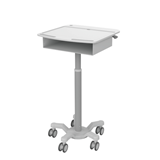
-160x160-state_article-rel-cat.jpg)

